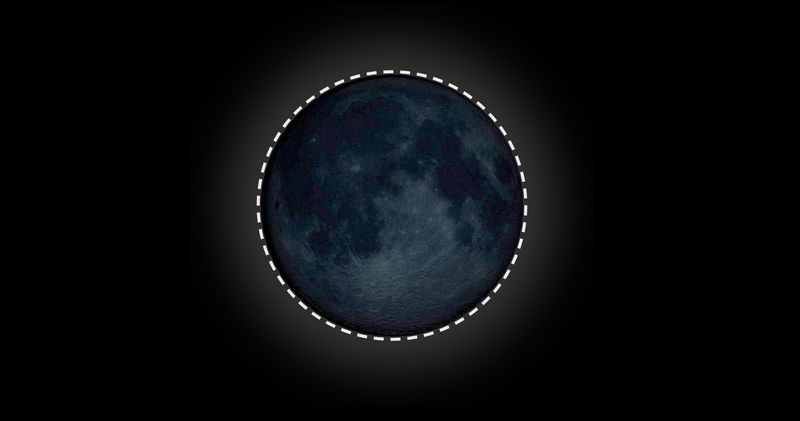
You won’t actually see it, but a rare black moon – this one, the second new moon in an astronomical season – will appear on Aug. 23. Weather permitting, it'll give you darker skies and extra time to stargaze and to observe the end of the Perseid meteor shower.
The term "black moon" is more of a folksy name, not an official label in astronomy, says Earthsky.org. It's a rare occurrence, taking place once every 33 months.
In simple terms, a black moon is an extra new moon. (A new moon, one of the eight lunar phases, is the moon we can’t see.) New moons happen when the moon is between the Earth and the sun. Its illuminated side faces away from Earth, which makes it invisible to us.
Can't see our graphics? Click here to reload the page.
The absence of reflected moonlight during a new moon makes stars and other celestial objects easier to see. That's when amateur astronomers can get out their telescopes or binoculars to study planets, stars and other deep-sky objects.
Black moons are unique because our 30- or 31-day calendar months are slightly different from 29.5-day lunar cycles. Astronomical seasons are also different, since lunar cycles don’t fit neatly into them. The differences allow black moons to appear at irregular intervals.
Black moons are referenced like blue moons, which are defined as the third full moon in an astronomical season containing four full moons. (Full moons are moons that are fully illuminated.)
How are black moons defined?
Monthly black moon: A second new moon in a calendar month.
Seasonal black moon: The third new moon in an astronomical season with four new moons. There are four astronomical seasons, defined by the Earth’s position in its solar orbit:
- Summer solstice
- Winter solstice
- Autumnal equinox
- Spring equinox
Astronomical seasons usually have three new moons. If a season has four new moons, the third is labeled a black moon.
SOURCE USA TODAY Network reporting and research; Reuters; NASA; space.com; iflscience.com; earthsky.org; livescience.com; National Geographic
This article originally appeared on USA TODAY: You can't see it, but a rare 'black moon' is due this week. How it happens.
Reporting by Janet Loehrke and George Petras, USA TODAY / USA TODAY
USA TODAY Network via Reuters Connect

 USA TODAY National
USA TODAY National
 WBIW
WBIW El Paso Times
El Paso Times Montomery Advertiser
Montomery Advertiser The Cut
The Cut The Bay City Times
The Bay City Times Roll Call
Roll Call Bloomberg Law
Bloomberg Law America News
America News AlterNet
AlterNet WTOP
WTOP